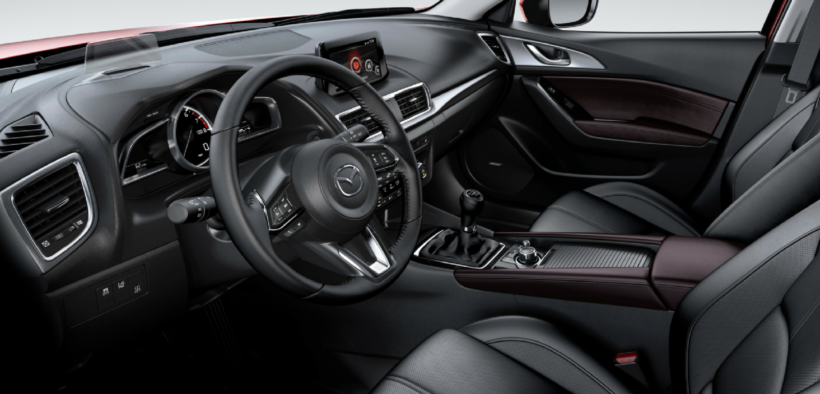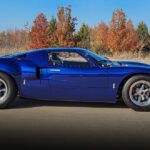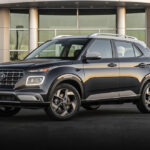10 Must Have Car Features in 2017

Not all that long ago, must have features in a new vehicle included an automatic transmission, air conditioning, power windows and locks, antilock brakes, and if you really wanted to go for it, an AM/FM radio with cassette tape deck. It would be difficult today to find a vehicle that doesn’t have those features standard, minus the tape deck. You’d probably have to pay quite a bit extra for that nowadays. To say we’ve become spoiled in comparison to the innovations of yesteryear is probably a gross understatement. There are a lot of new features out there that match our need for being connected as well as some long overdue enhancements to modern vehicles. Wondering which car features are worth it? We’ve identified ten must have features for 2017.
Seat Upgrades
According to a survey from the AAA Foundation for Traffic Safety, American drivers spend an average of at least 17,600 minutes in the driver seat. That is more than 293 hours! A comfortable, ergonomic driver seat will not only keep you comfortable and alert but also reduce fatigue and potential back problems. Lumbar support is now a more common feature, as are heated and cooled seats. Vehicles like the Kia Optima Hybrid are priced right and offer 12-way leather seats with 4-way lumbar support standard. We spend a lot of time sitting, why not make it a little more bearable?

Kia Optima
Infotainment
Most manufacturers offer a touchscreen infotainment system, and many integrate Apple CarPlay and Android Auto. These interfaces are perfect for someone who prefers Apple or Android platforms and don’t want to learn an entirely new one to listen to music in the car. Another perk is voice recognition technology, which allows for safer driving and less visual distraction. Need directions? Emergency support? They do that, too. Chrysler’s latest Uconnect and Hyundai’s Blue Link topped Consumer Report’s infotainment satisfaction survey last year.
Rearview Camera
Rearview cameras are required for any new 2018 model and must meet federal standards. While several new vehicles offer them as standard already, many were add-ons or available by upgrading trims. These are great for convenience and for safety, helping to eliminate backing into something or someone, as well as helping you to see where you are going without straining your neck. In the few short years that they have been around, the tech has improved greatly. In fact, someone made a short film using only a Prius backup camera, sort of.
Rear Cross-Traffic Alert
Backing out of a tight parking space with minimal visibility can be difficult, even with a rearview camera. Rear cross-traffic alert uses sensory technology to determine and warn you, using visual and audio alerts, if a vehicle is approaching from either side as you back out. Helping alleviate some of the concern of another parking lot fender bender is certainly worth the safety package or trim upgrade alone.
Parallel parking? That’s a different story.
Blind Spot Detection
Blind spots are dangerous. They vary from vehicle to vehicle, in both location and degree. Blind spot detection works with the same technologies as rear cross-traffic alert. To help ease the stress of changing lanes, it keeps you and your passengers safe by identifying and warning you of oncoming traffic that happens into your blind spot.
Adaptive Cruise Control
If you’ve ever been pulled over for speeding on a highway, you’ve probably been asked if you have cruise control. It’s a fantastic feature for driving long distances and maintains your speed so you don’t “accidently” creep up above the speed limit. Another advance in the system is adaptive cruise control, which adjusts your speed to maintain a safe distance from the vehicle ahead of you. This is particularly handy if someone ahead of you is driving at a snail’s pace and you come upon them faster than you expected. Just imagine your car slowing you down instead of your spouse telling you to. Ford takes it one step further with stop and go, allowing the vehicle to come to a full stop with the flow of busy highway traffic, and to autonomously accelerate after the vehicle ahead does so. Again, worth the investment.
Lane Departure Warning
Even with the latest innovations to help minimize distraction, it’s nearly impossible to keep your eye on the road all the time. However, lane departure warning technology does just that by using a camera to track a vehicle’s position in a lane. If the vehicle veers outside of the lane or appears to be doing so without the driver signaling, an audio alert, visual alert, and sometimes a steering wheel or seat vibration notifies the driver. In most vehicles, the feature only works when traveling at 40 mph or faster. Honda’s Sensing technology bundles lane departure warning with adaptive cruise control and blind spot detection, giving you quite a package for the money. Some vehicles offer an enhancement, lane keep assist, that corrects steering or applies brakes.
Head-up Display
A head-up or heads-up display (HUD) keeps important information in front of you, helping to eliminate distractions. After all, what better way to know how fast you’re going and how to get somewhere than projected speedometer and an arrow pointing the way, via augmented reality? Much like steering wheel controls changed how we managed our attention, head-up displays are on track to becoming an absolute must for new car models. As the price of the technology decreases and capability increases, we’ll be seeing these in many more vehicles sooner than later. The nicely priced Mazda Mazda3 and Toyota’s Prius both have them available. That means you don’t have to buy a Lexus, Mercedes, or a BMW to get the technology. But we wouldn’t stop you.
Rear Seat Reminder
The Cadillac CT6 and GMC Acadia are getting a standard feature that helps eliminate the leading cause of non-crash vehicle fatalities, heatstroke. Rear seat reminder prompts the driver to check for young passengers in the backseat. It is triggered by opening and closing the back doors within ten minutes of the vehicle starting, or if opened and closed at any time the vehicle is running. When triggered, an audible chime and visual display prompt the driver with a reminder to check the back for tiny passengers.

GMC Acadia
Forward Collision Warning
Thanks to more stringent ratings and requirements from both the National Highway Traffic Safety Administration (NHTSA) and Insurance Institute for Highway Safety (IIHS), manufacturers are placing more emphasis on improving crash prevention technology. Forward Collison Warning utilizes sensory technology to alert the driver and some actually avoid or minimize potential collisions with other vehicles, barriers, and even pedestrians. The “+” for IIHS Top Safety Pick+ is earned when collision avoidance and mitigation systems meet government standards and Advanced or Superior ratings from the IIHS for Front Crash Prevention. Don’t be surprised if forward collision warning is the next required safety feature for new vehicles in the future.
Any must have features that we missed? Let us know in the comments below!











